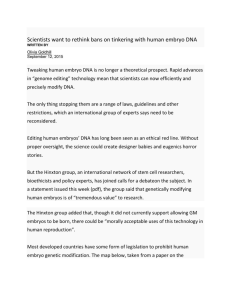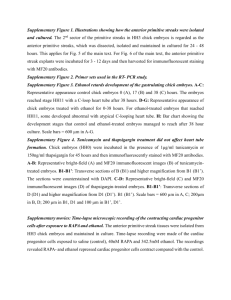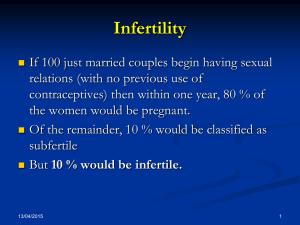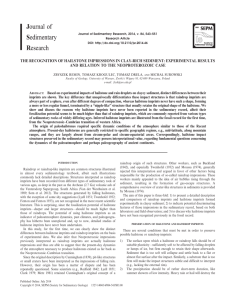jgrd51775-sup-0001-readme
advertisement
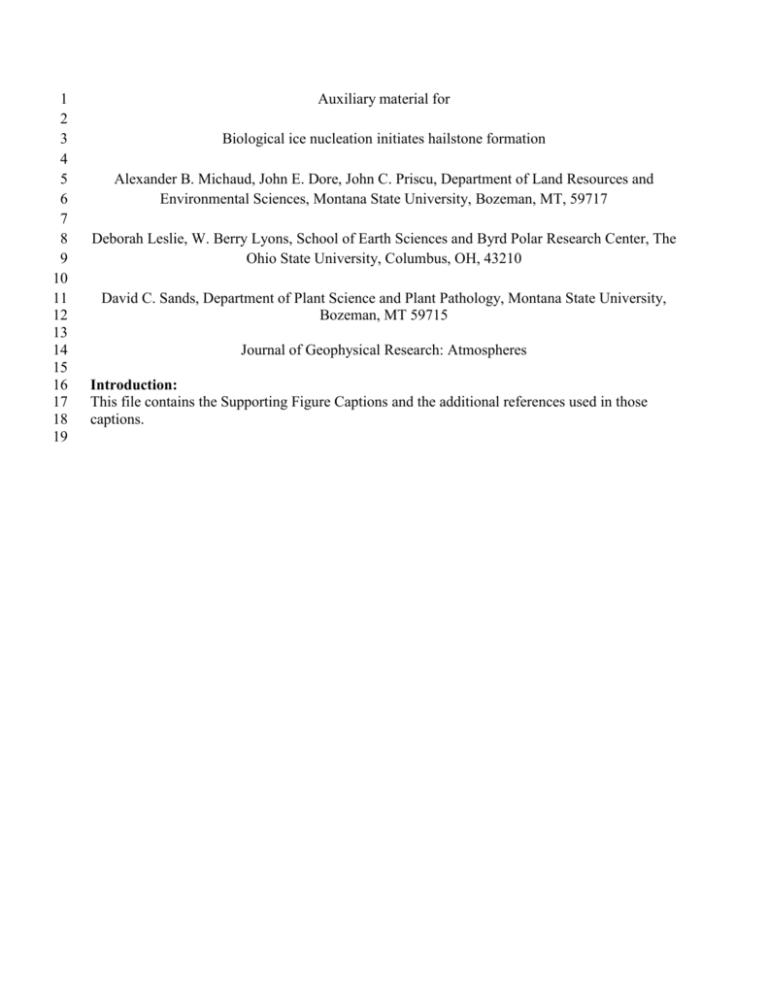
1 2 3 4 5 6 7 8 9 10 11 12 13 14 15 16 17 18 19 Auxiliary material for Biological ice nucleation initiates hailstone formation Alexander B. Michaud, John E. Dore, John C. Priscu, Department of Land Resources and Environmental Sciences, Montana State University, Bozeman, MT, 59717 Deborah Leslie, W. Berry Lyons, School of Earth Sciences and Byrd Polar Research Center, The Ohio State University, Columbus, OH, 43210 David C. Sands, Department of Plant Science and Plant Pathology, Montana State University, Bozeman, MT 59715 Journal of Geophysical Research: Atmospheres Introduction: This file contains the Supporting Figure Captions and the additional references used in those captions. 20 21 22 23 24 25 26 27 28 29 30 31 32 33 34 35 36 37 38 39 40 41 42 43 44 45 46 47 48 49 50 51 52 53 54 55 56 57 58 59 60 61 62 63 Supplemental Figure Captions Fig. S1. The evolutionary relationships of bacteria isolated from hailstone embryos, known ice nucleation active bacteria, and related organisms. Taxa in red are those from hailstone embryos. Squares preceding taxon names are known INA organisms [Wallin et al., 1979; Hirano and Upper, 1995] and circles indicate INA organisms identified in this study. The evolutionary history was inferred using the Neighbor-Joining method. The percentage of replicate trees in which the associated taxa clustered together in the bootstrap test (1000 replicates) are shown next to the branches only for values greater than 65%. The tree is drawn to scale, with branch lengths in the same units as those of the evolutionary distances used to infer the phylogenetic tree. The evolutionary distances were computed using the Maximum Composite Likelihood method and are in the units of the number of base substitutions per site. Scale bar represents 2 substitutions per 100 bases. Fig. S2. The particle size and identity from the embryos of the three hailstorms studied. A, Distribution of particle diameter for June 2010 hailstone embryos (n=659). B, Distribution of particle diameter for July 2010 hailstone embryos (n=560). C, Distribution of particle diameter for August 2011 hailstone embryos (n=286). D, Relative abundance of particles for June 2010 hailstone embryos (n=50). E, Relative abundance of particles for July 2010 hailstone embryos (n=50). F, Relative abundance of particles for August 2011 hailstone embryos (n=50). Fig. S3. SEM images of biological particles found in hailstone embryos. A, Cluster of Urediniospores (a cereal and grass rust fungal spore) in June 2010 hailstone embryos (L. Szabo and Y. Jin, personal communication). B, Biological particles, indicated by arrow, attached to an inorganic particle, in August 2011 embryos. C, Unidentified biological particle in July 2010 embryos. D, A pollen grain, likely from the genus Pinus, was abundant in July 2010 embryos. E, Unidentified biological particle in August 2011 embryos. F, Cluster of Urediniospores (a cereal and grass rust fungal spore), similar to panel A, but found in July 2010 embryos as well (L. Szabo and Y. Jin, personal communication). Scale bar in panel A is 2µm and applies to panels A, B, and C. Scale bar in panel D is 10µm and applies to panels D, E, and F. 64 65 66 References 67 68 69 Hirano, S. S., and C. D. Upper (1995), Ecology of Ice Nucleation-Active Bacteria, in Biological Ice Nucleation and Its Applications, edited by R. E. Lee, G. J. Warren, and L. V. Gusta, p. 370, The American Phytopathological Society, St. Paul, MN. 70 71 Wallin, J. R., D. V. Loonan, and C. A. C. Gardner (1979), Erwinia stewartii: an ice nucleus for frost damage to maize seedlings, Plant Dis. Report., 63, 751–752. 72


